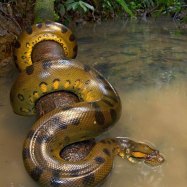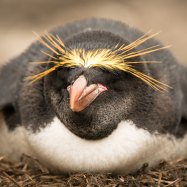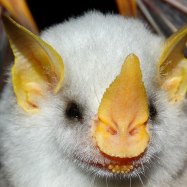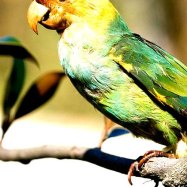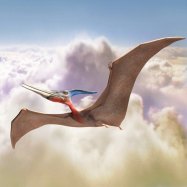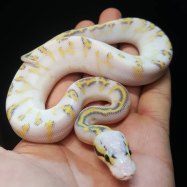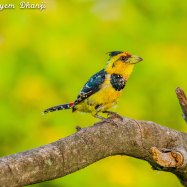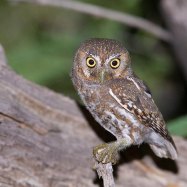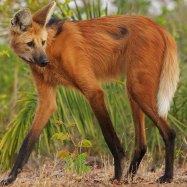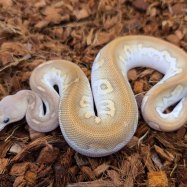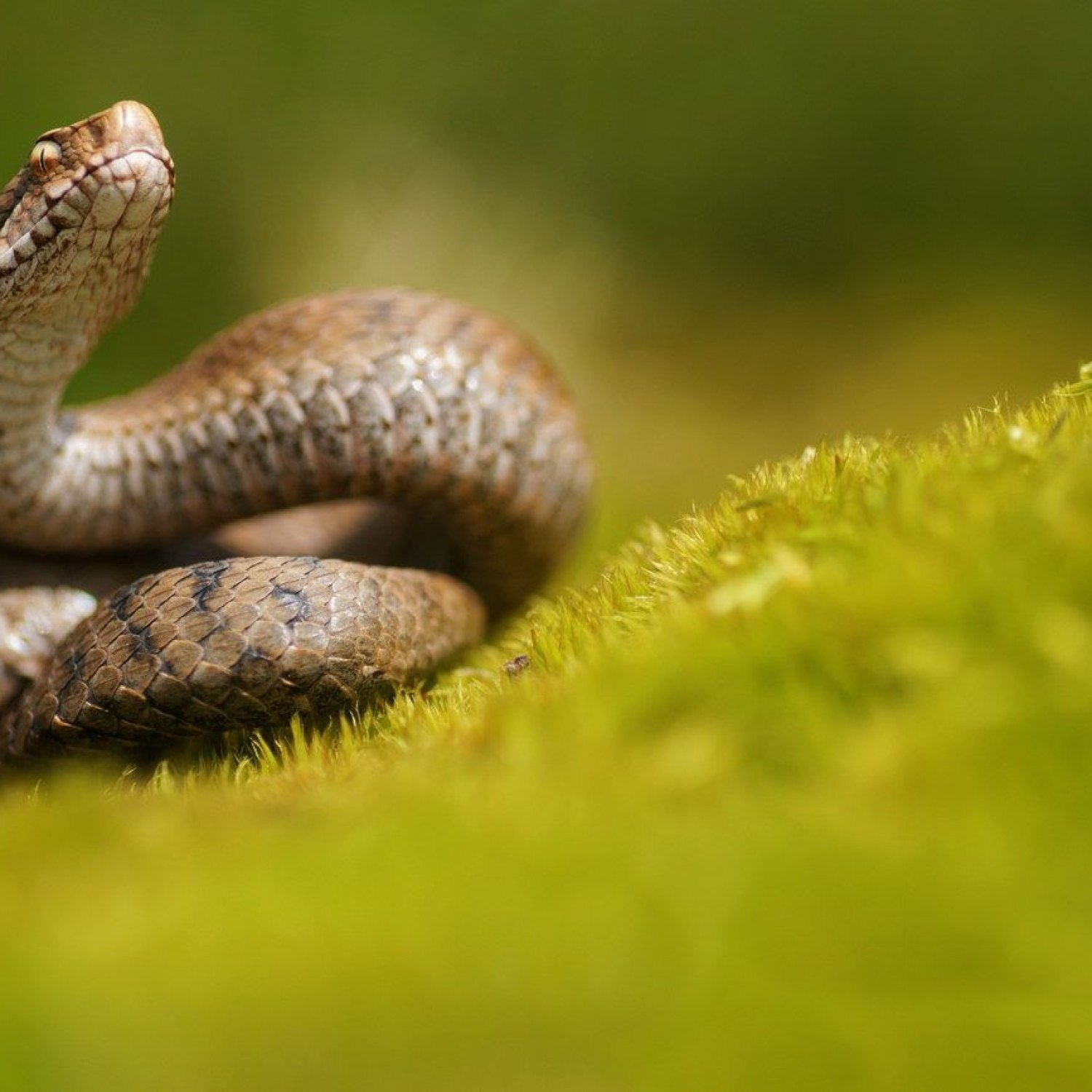
Asp
60-90 cm
The Asp, also known as the European Asp, is a venomous snake species found in countries such as France, Spain, Italy, Switzerland, Austria, Slovenia, Croatia, Bosnia and Herzegovina. With a length of 60-90 cm, this stocky and cylindrical snake belongs to the Viperidae family and is known for its deadly bite. Be cautious when traveling in these areas and always keep a safe distance from any wild animals.
Animal Details Summary:
Common Name: Asp
Kingdom: Animalia
Habitat: Grasslands, heathlands, rocky areas
The Asp: A Fascinating Reptile of Central and Southern Europe
The animal kingdom is full of amazing creatures, each with their own unique characteristics. One such fascinating species is the Asp, scientifically known as Vipera aspis. This venomous snake is commonly found in central and southern Europe, making its home in diverse habitats such as grasslands, heathlands, and rocky areas.Asps belong to the kingdom Animalia, phylum Chordata, and class Reptilia Asp. They are part of the order Squamata, which includes lizards, snakes, and worm lizards. Asps are classified under the family Viperidae, also known as the Viper family, which consists of over 300 species of venomous snakes.
Asps are known by different names, such as European asp, aspic viper, and Jura viper. However, their most common name, simply the "Asp," has a history dating back to ancient Greece. In Greek mythology, the Asp was known as the snake used by Cleopatra to commit suicide, although the snake she used was likely a different species.
These intriguing creatures have a widespread distribution, stretching across various countries in Europe. Some of the countries where Asps can be found include France, Spain, Italy, Switzerland, Austria, Slovenia, Croatia, and Bosnia and Herzegovina. Let's delve deeper into the world of the Asp and discover more about their unique features and behavior.
Appearance and Physical Characteristics
Asps have a stocky and cylindrical body, with an average length of 60-90 cm Azawakh. However, they can grow up to 1.2 meters, making them one of the largest vipers in Europe. They have short, robust heads and distinct markings on their body, which vary in color and pattern.Their coloration can range from light brown to dark gray or black, with darker patches or bands along the length of their body. This helps them camouflage themselves in their environment, making it easier for them to ambush their prey or hide from potential predators.
One unique physical characteristic of Asps is their vertical pupils. These slit-like pupils aid in their vision and help them to accurately judge distance, especially when hunting prey.
Habitat and Distribution
Asps are mainly found in central and southern Europe, with their range extending from France to Bosnia and Herzegovina. They are primarily terrestrial animals, preferring to live in open areas such as grasslands, rocky slopes, and heathlands.Asp's habitat is essential for their survival as they rely on a variety of prey to survive. Their preferred prey includes small mammals like voles, shrews, and mice, as well as lizards, birds and occasionally, other snakes.
Feeding Habits
Asps are carnivorous, meaning they feed on other animals to survive. Their diet mainly consists of rodents, which they hunt using their venom. As ambush predators, Asps wait for their prey to come close before striking with their venomous fangs.Interestingly, Asps are not known to use their venom for defensive purposes and are considered shy and non-aggressive snakes. However, they can be deadly when provoked or threatened, and their venom is potent and fast-acting.
Behavior and Temperament
Asps are mostly active during the day, with their peak activity being in the late afternoon and early evening. They are solitary animals, only coming together during the breeding season, which occurs in late spring and early summer.The reproductive process of Asps involves male combat, where males compete for the attention of females. These combats can sometimes be fatal, with the weaker male succumbing to injuries sustained during the fight.
Conservation Status and Threats
In the past, Asps have been widely persecuted due to fear and misunderstanding of their behavior. However, the population of Asps has seen a significant decline over the years due to habitat loss and fragmentation. This has led to the classification of Asps as a near-threatened species on the International Union for Conservation of Nature (IUCN) Red List.In addition to habitat loss, Asp populations are also threatened by roadkill, human persecution, and collecting for the illegal pet trade. Conservation efforts, such as habitat preservation and public education, are essential in ensuring the survival of these fascinating creatures.
Conclusion
The Asp is a unique and fascinating reptile, with a rich history and many interesting characteristics. As a venomous snake, it is vital to understand and respect these creatures, as they play a crucial role in maintaining the balance of their ecosystem.From their physical appearance to their habitat and behavior, Asps have many exceptional features that make them stand out in the animal kingdom. With their conservation status listed as near-threatened, it is essential to continue learning about Asps and their role in our environment to ensure their continued survival.
Next time you encounter an Asp, whether in the wild or in a zoo, take a moment to appreciate this remarkable species and the crucial role it plays in our ecosystem.

Asp
Animal Details Asp - Scientific Name: Vipera aspis
- Category: Animals A
- Scientific Name: Vipera aspis
- Common Name: Asp
- Kingdom: Animalia
- Phylum: Chordata
- Class: Reptilia
- Order: Squamata
- Family: Viperidae
- Habitat: Grasslands, heathlands, rocky areas
- Feeding Method: Carnivorous
- Geographical Distribution: Central and southern Europe
- Country of Origin: Multiple countries in Europe
- Location: France, Spain, Italy, Switzerland, Austria, Slovenia, Croatia, Bosnia and Herzegovina
- Animal Coloration: Varies (typically brown, gray, or black) with dark patches or bands
- Body Shape: Stocky and cylindrical
- Length: 60-90 cm
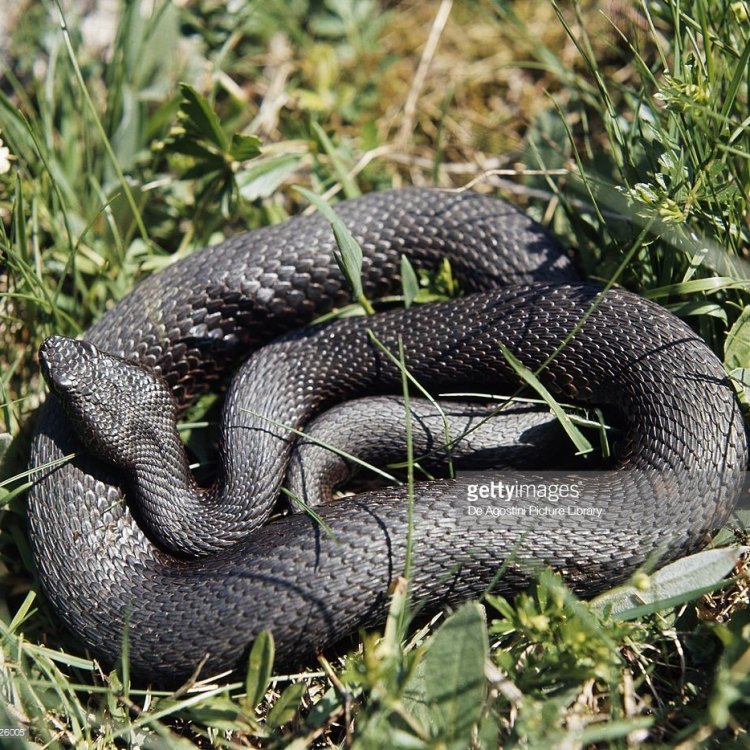
Asp
- Adult Size: Medium-sized
- Average Lifespan: 10-15 years
- Reproduction: Sexual
- Reproductive Behavior: Mating occurs in spring, with females giving birth to live young in late summer
- Sound or Call: Hisses when threatened
- Migration Pattern: Non-migratory
- Social Groups: Solitary
- Behavior: Nocturnal, ambush predator
- Threats: Habitat loss, persecution by humans
- Conservation Status: Least Concern
- Impact on Ecosystem: Predator, plays a role in controlling rodent populations
- Human Use: Subject to snakebite incidents, venom used for antivenom production
- Distinctive Features: Triangular-shaped head, venomous fangs
- Interesting Facts: The asp is one of the few venomous snakes found in Europe
- Predator: Birds of prey, mammals
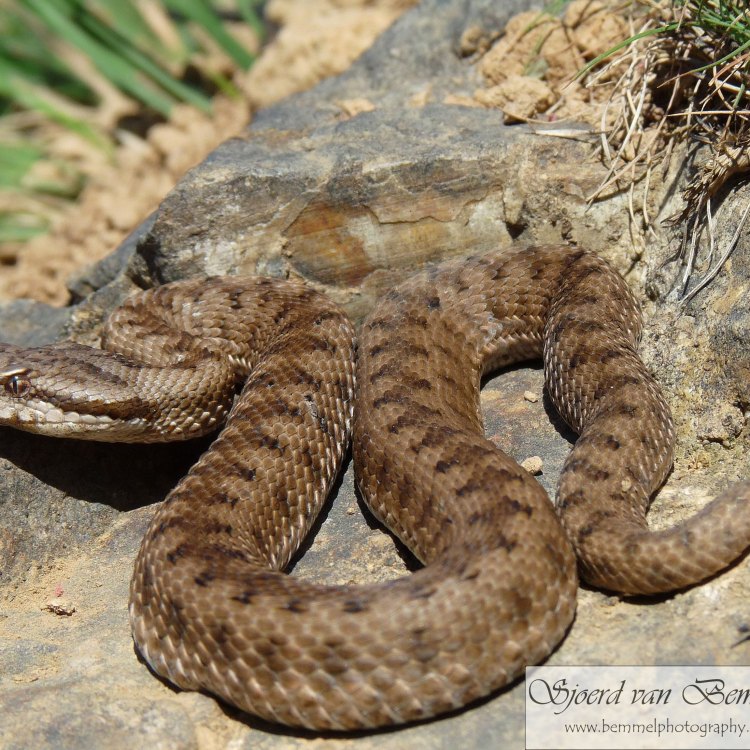
Vipera aspis
The Elusive Asp Snake: A Hidden Predator of Europe
The Asp, also known as the European Asp, is a medium-sized venomous snake found in southern and central Europe. This elusive and secretive snake has captured the fascination of many with its distinctive features and impressive role in the ecosystem. Despite its intriguing characteristics, the Asp remains largely unknown to the general public, and as a result, its important role in the ecosystem is often overlooked.Let's uncover the mystery behind this unique and fascinating reptile PeaceOfAnimals.Com.
Appearance and Behavior
The Asp is a medium-sized snake, reaching an average length of 80-100 centimeters. It has a slender body and a triangular-shaped head, with two venomous fangs that can be up to 7 millimeters in length. These fangs are used to inject venom into their prey, mostly small rodents, lizards, and birds.As nocturnal creatures, Asps are rarely seen during the day. They are ambush predators and rely on their camouflage to blend in with their surroundings and surprise their prey. In fact, their color can range from shades of gray, brown, and olive, making them almost invisible in their natural habitat.
When threatened, Asps will hiss and inflate their bodies, making themselves look bigger and more intimidating to predators. However, they will only strike as a last resort. They are more likely to try to escape and hide than confront a potential threat Archerfish.
Interestingly, Asps are solitary creatures and only come together for mating in the spring. Females give birth to live young in the late summer, with an average of 12 offspring per litter. This reproductive behavior is known as sexual, as opposed to asexual reproduction found in some species.
Habitat and Distribution
As a non-migratory species, Asps can be found in a variety of habitats, including dry and rocky areas, woodlands, and scrublands. They are most commonly found in southern and central Europe, including parts of France, Italy, and Spain.Given their solitary nature, Asps can be difficult to spot in the wild. They are also known for their elusive behavior, making it challenging for researchers to study their population and distribution accurately.
Human Impact and Conservation
The Asp faces several threats in its natural habitat, including habitat loss and persecution by humans. Asp populations have declined in some areas due to urbanization, agriculture, and deforestation, which have destroyed their natural habitats. Additionally, humans often kill Asps out of fear or misunderstanding, despite their vital role in the ecosystem.However, thanks to its wide distribution and relatively stable population, the Asp is currently listed as Least Concern on the IUCN Red List, which means it is not at significant risk of extinction. Nonetheless, conservation efforts are necessary to ensure the continued survival of this unique snake species.
Role in the Ecosystem
As ambush predators, Asps play a crucial role in controlling rodent populations. These snakes can consume a considerable number of rodents, which are known to cause damage and diseases to crops and human settlements. Therefore, the presence of Asps in the ecosystem helps maintain a balance in the rodent population and prevents potential harm to the environment and human health.Asps are also a natural predator, meaning they are essential in maintaining the balance of prey and predator species in their habitats. Without this control, the ecosystem could be negatively impacted, leading to a cascade effect on other species.
Human Use and Fascination
The Asp is not commonly used for human consumption, but it is subject to snakebite incidents. Asp venom is known to be potent and can cause severe symptoms if not treated promptly. However, it is also used for the production of antivenom, which is crucial for saving the lives of those who have been bitten by venomous snakes.Aside from its role in medical use, the Asp has also captured the fascination of many people. Its venomous fangs and secretive behavior make it a subject of curiosity and fear. Moreover, its presence in Europe, where venomous snakes are not prevalent, makes it even more intriguing.
Interesting Facts
One of the most interesting facts about the Asp is that it is one of the few venomous snakes found in Europe. While there are other venomous snakes, such as vipers and cobras, they are found in other parts of the world. The Asp, however, has managed to thrive in its unique habitat, making it a remarkable species.Additionally, the Asp is also known by other names, such as the European Asp, Vipera Aspis, and the Jura, depending on the region where it is found. These names add to the mysterious allure of this elusive snake.
Predators of the Asp
Despite being a skilled predator, the Asp also has its own predators. Birds of prey, such as eagles, hawks, and owls, are known to prey on Asps. Mammals, including foxes, badgers, and wild boars, may also prey on these snakes.However, humans remain the biggest threat to the Asp's survival. As mentioned earlier, they are often killed due to fear and misunderstanding, and their habitats are continuously destroyed for human development.
In Conclusion
The Asp is a mysterious and unique snake with an important role in the ecosystem. Its distinctive features, elusive behavior, and vital role in controlling rodent populations make it a crucial species in southern and central Europe. While it faces threats from humans, the Asp continues to thrive and play an essential role in maintaining the balance of its natural habitat. By raising awareness and understanding of this fascinating snake, we can ensure its continued survival and appreciate its contributions to the ecosystem.
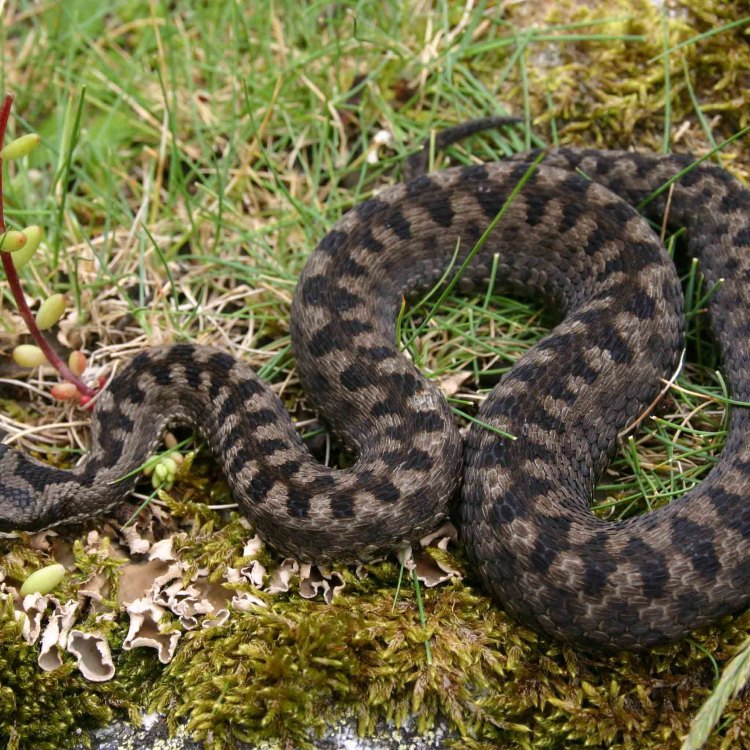
The Asp: A Fascinating Reptile of Central and Southern Europe
Disclaimer: The content provided is for informational purposes only. We cannot guarantee the accuracy of the information on this page 100%. All information provided here may change without prior notice.

